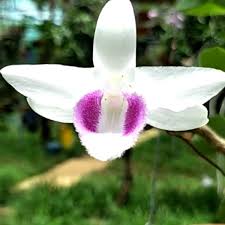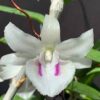# Recent Scientific Studies on Phalaenopsis Orchids

Phalaenopsis orchids, commonly known as moth orchids, have gained significant attention in the scientific community due to their unique biological characteristics, diverse ecological adaptations, and commercial value in horticulture. Over the years, numerous studies have been conducted to explore various aspects of these fascinating plants, ranging from genetics and physiology to conservation and cultivation techniques. This article will delve into recent scientific research on Phalaenopsis orchids, highlighting key findings and their implications for horticulture, conservation, and environmental science.
## Table of Contents
1. **Introduction to Phalaenopsis Orchids**
2. **Genetic Diversity and Breeding Studies**
– 2.1. Genetic Mapping and Molecular Markers
– 2.2. Hybridization and Breeding Programs
3. **Physiological Studies and Environmental Adaptations**
– 3.1. Photosynthesis and Light Requirements
– 3.2. Water and Nutrient Management
4. **Pathology and Disease Resistance**
– 4.1. Common Diseases Affecting Phalaenopsis
– 4.2. Studies on Disease Resistance Mechanisms
5. **Conservation and Biodiversity**
– 5.1. Conservation Strategies for Wild Populations
– 5.2. The Role of Ex Situ Conservation
6. **Cultural and Economic Significance**
– 6.1. The Horticultural Industry and Phalaenopsis
– 6.2. Economic Impact of Phalaenopsis Cultivation
7. **Future Directions in Phalaenopsis Research**
8. **Conclusion**
—
## 1. Introduction to Phalaenopsis Orchids
Phalaenopsis orchids belong to the Orchidaceae family and are native to tropical and subtropical regions of Asia. These orchids are characterized by their large, flat flowers and long-lasting blooms, which have made them one of the most popular orchid species cultivated worldwide. Phalaenopsis orchids thrive in humid, warm environments, and their ability to adapt to various growing conditions has contributed to their widespread appeal.
In recent years, scientific research on Phalaenopsis orchids has intensified, focusing on various aspects of their biology, ecology, and economic importance. Understanding the underlying genetic, physiological, and ecological factors that influence their growth and survival is essential for developing effective conservation strategies and improving cultivation practices.
—
## 2. Genetic Diversity and Breeding Studies
### 2.1. Genetic Mapping and Molecular Markers
Recent studies have employed genetic mapping and molecular markers to assess the genetic diversity of Phalaenopsis orchids. For instance, a study published in *Frontiers in Plant Science* utilized simple sequence repeat (SSR) markers to analyze the genetic diversity among various Phalaenopsis species and hybrids. The results indicated significant genetic variation, which is crucial for breeding programs aimed at developing new cultivars with desirable traits such as flower color, size, and disease resistance.
Moreover, advances in next-generation sequencing technologies have enabled researchers to construct comprehensive genomic resources for Phalaenopsis orchids. These resources facilitate the identification of genes associated with specific traits, paving the way for marker-assisted selection in breeding programs.
### 2.2. Hybridization and Breeding Programs
Hybridization has been a key focus of recent research in Phalaenopsis orchids. Studies have explored the potential of hybrid crosses to produce new cultivars with enhanced ornamental characteristics and improved stress tolerance. For example, researchers have successfully crossed different Phalaenopsis species to create hybrids with unique flower colors and patterns, significantly expanding the genetic pool available for ornamental cultivation.
One notable example is the hybridization of Phalaenopsis equestris and Phalaenopsis aphrodite, resulting in hybrids that exhibit vibrant flower colors and longer-lasting blooms. These breeding programs not only contribute to the ornamental value of Phalaenopsis orchids but also enhance their commercial viability in the horticultural market.
—
## 3. Physiological Studies and Environmental Adaptations
### 3.1. Photosynthesis and Light Requirements
Understanding the photosynthetic mechanisms of Phalaenopsis orchids is critical for optimizing their cultivation. Recent studies have examined the light requirements of these orchids, revealing that Phalaenopsis orchids thrive in bright, indirect light conditions. Research published in the *Journal of Horticultural Science & Biotechnology* indicates that optimal light levels significantly influence photosynthesis rates and overall plant growth.
Furthermore, studies have explored the photoperiodic response of Phalaenopsis orchids, demonstrating that varying light durations can affect flowering time and quality. These findings emphasize the importance of providing suitable light conditions for maximizing the growth and blooming potential of Phalaenopsis orchids in cultivation.
### 3.2. Water and Nutrient Management
Water and nutrient management are crucial factors influencing the health and growth of Phalaenopsis orchids. Recent research has investigated the effects of different irrigation techniques and nutrient formulations on orchid performance. Studies have shown that the use of substrate moisture sensors can improve irrigation practices, ensuring that Phalaenopsis orchids receive the appropriate amount of water without over-saturation.
Additionally, research has highlighted the significance of nutrient uptake in relation to orchid growth. For instance, studies have examined the optimal ratios of macronutrients (nitrogen, phosphorus, and potassium) and micronutrients for Phalaenopsis orchids, contributing to improved fertilization practices that enhance growth and flowering.
—
## 4. Pathology and Disease Resistance
### 4.1. Common Diseases Affecting Phalaenopsis
Phalaenopsis orchids are susceptible to various diseases that can significantly impact their health and ornamental value. Recent studies have identified common pathogens affecting these orchids, including *Pythium*, *Phytophthora*, and *Botrytis*. Understanding the disease dynamics is essential for developing effective management strategies.
For instance, research published in *Plant Pathology Journal* highlighted the role of environmental conditions, such as humidity and temperature, in disease development. By identifying critical factors that favor pathogen growth, growers can implement preventive measures to minimize disease incidence in Phalaenopsis orchids.
### 4.2. Studies on Disease Resistance Mechanisms
Recent studies have focused on understanding the disease resistance mechanisms in Phalaenopsis orchids. Research has shown that certain Phalaenopsis species possess inherent resistance to specific pathogens, which can be utilized in breeding programs to develop disease-resistant cultivars.
Genomic studies have identified genes associated with disease resistance, providing valuable insights into the molecular basis of resistance mechanisms. This knowledge can aid in the selection of parental lines for hybridization, ultimately leading to the development of resilient Phalaenopsis hybrids that can withstand common diseases.
—
## 5. Conservation and Biodiversity
### 5.1. Conservation Strategies for Wild Populations
The conservation of wild Phalaenopsis orchid populations is vital for preserving biodiversity and maintaining ecological balance. Recent research has focused on developing conservation strategies that address habitat loss and over-collection.
Studies have emphasized the importance of in situ conservation, which involves protecting the natural habitats of Phalaenopsis orchids. This approach includes habitat restoration, sustainable land management practices, and the establishment of protected areas to safeguard orchid populations from threats.
### 5.2. The Role of Ex Situ Conservation
Ex situ conservation, which involves cultivating orchids in controlled environments, plays a crucial role in preserving genetic diversity. Recent studies have explored the effectiveness of tissue culture techniques for propagating Phalaenopsis orchids, allowing for the preservation of rare and endangered species.
Research has demonstrated that tissue culture methods can successfully produce healthy orchid plants from small tissue samples, providing a sustainable approach to conservation. These propagated orchids can later be reintroduced into their natural habitats, contributing to biodiversity restoration efforts.
—
## 6. Cultural and Economic Significance
### 6.1. The Horticultural Industry and Phalaenopsis
Phalaenopsis orchids hold significant cultural and economic value, particularly in the horticultural industry. Recent market studies have highlighted the increasing demand for Phalaenopsis orchids, driven by their popularity in floral arrangements, decorative displays, and as gifts.
Research has explored consumer preferences for specific flower colors, shapes, and sizes, providing valuable insights for growers and marketers. Understanding consumer trends allows growers to tailor their production strategies to meet market demands effectively.
### 6.2. Economic Impact of Phalaenopsis Cultivation
The cultivation of Phalaenopsis orchids has a substantial economic impact on local and global markets. Recent studies have estimated the economic value of Phalaenopsis orchid production, highlighting its contribution to employment and income generation in rural communities.
Additionally, research has examined the potential for sustainable orchid cultivation practices to enhance the economic viability of orchid growers while promoting environmental conservation. This approach can help balance economic interests with the preservation of orchid species and their habitats.
—
## 7. Future Directions in Phalaenopsis Research
As scientific research on Phalaenopsis orchids continues to evolve, several future directions can be identified:
– **Exploring Genetic Modification**: Advances in genetic engineering may enable researchers to develop Phalaenopsis orchids with enhanced traits, such as increased disease resistance or improved growth rates.
– **Integrating Biotechnology**: The application of biotechnology in orchid propagation and cultivation can lead to more efficient production methods and the conservation of rare species.
– **Enhancing Sustainability**: Future research should focus on developing sustainable cultivation practices that minimize environmental impacts while maximizing productivity.
– **Investigating Ecological Roles**: Further studies on the ecological roles of Phalaenopsis orchids in their native habitats can provide insights into their interactions with other species and their contributions to ecosystem health.
—
## 8. Conclusion
Recent scientific studies on Phalaenopsis orchids have significantly advanced our understanding of their genetics, physiology, pathology, and conservation. The insights gained from this research have important implications for horticulture, conservation, and environmental science.
As Phalaenopsis orchids continue to capture the interest of researchers, growers, and enthusiasts alike, ongoing studies will play a crucial role in ensuring the sustainable cultivation and conservation of these remarkable plants. By integrating
scientific knowledge with practical applications, we can enhance the appreciation and preservation of Phalaenopsis orchids for future generations.
In summary, the diverse research conducted on Phalaenopsis orchids not only enhances our understanding of this iconic genus but also promotes responsible practices that benefit both the orchids and the ecosystems in which they thrive.

